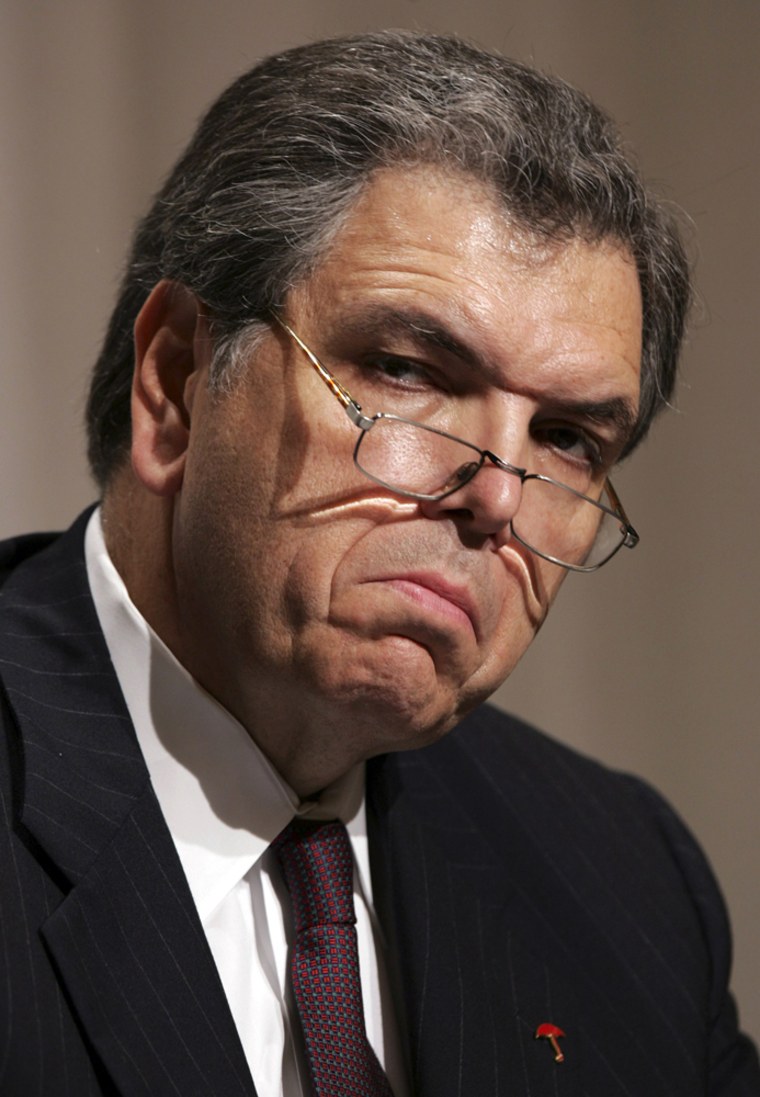A month after foretelling a better future for Citigroup Inc., Charles Prince has no future of his own at the nation’s largest financial institution.
Instead, former U.S. Treasury Secretary Robert E. Rubin, once co-chairman of Goldman, Sachs & Co., will be chairing the beleaguered bank, which may take until well into next year to get back on track after making bad bets on debt. Sir Win Bischoff, chairman of Citi Europe and a member of the Citi management and operating committees, will serve as interim CEO.
Prince’s widely expected departure from the positions of chief executive and chairman came Sunday at an emergency meeting of Citi’s board, at which the company also decided to take $8 billion to $11 billion in writedowns. Citi already took a hit during the third quarter of $6.5 billion from asset writedowns and other credit-related losses.
“It was the honorable course, given the losses we are now announcing,” Rubin said of Prince’s resignation in an interview with The Associated Press.
Prince, 57, joined former Merrill Lynch & Co. CEO Stan O’Neal, who resigned from the investment bank last month, as the highest-profile casualties of the debt crisis that has cost billions at other financial institutions as well.
Prince became chief executive of Citigroup in October 2003. Many shareholders criticized him openly for much of his tenure, as Citigroup’s stock lagged its peers while Prince executed what was called an umbrella model of corporate organization, with several separate lines of business. Shares closed Friday at $37.73, about 20 percent below where they were when Prince became CEO.
Prince’s position looked especially shaky after the company on Oct. 1 estimated that third-quarter profit would decline about 60 percent to some $2.2 billion after seeing nearly $6 billion in credit costs and write-downs of overly leveraged corporate debt and souring home mortgages. At that time, Prince said the bank’s earnings would return to normal in the fourth quarter.
But when Citigroup released its third-quarter results two weeks later, the write-downs and credit costs exceeded $6 billion, and Chief Financial Officer Gary Crittenden indicated the outlook going forward wasn’t as upbeat as Prince had predicted.
Citigroup wasn’t alone in its third-quarter turmoil. When borrowers with poor credit stopped paying their mortgages, many banks not only had to take losses on those subprime mortgages, they also saw instruments in their portfolios backed by mortgages plummet in value.
But Citigroup’s stumbles were particularly grievous, given the bank’s size, history and CEO, who had been telling shareholders for years to give his strategy a chance. Even in October, Prince said in a call to analysts: “I think any fair-minded person would say that strategic plan is working.”
The umbrella model that Sanford I. Weill created and Prince touted looked like a giant mess compared to its conglomerate counterpart JPMorgan Chase & Co. — now led by Weill’s former protege, Jamie Dimon. JPMorgan’s writedowns were smaller, and strength in asset management, security services, card services and commercial banking units made up for weakness in other areas. Having cut costs and built up cash reserves in previous quarters, the bank was better prepared for a tough lending climate.
Meanwhile, Citigroup’s expenses outweighed revenues, it botched its fixed income trading operations, and its cash-to-debt ratio dipped.
The anger toward Prince was so intense that during a conference call last month, Deutsche Bank analyst Mike Mayo told Prince that investors wanted a significant change in management. His supporters, though, argue that he was dealt a tough hand when his predecessor Weill gave him the reins, and that matching the hefty profit gains Citigroup saw in the 1990s would be difficult for any CEO.
Weill was a fairly popular leader, building Citigroup through various mergers and acquisitions over the course of about 20 years into the huge conglomerate that it is today. When he stepped down as chairman in 2006 and handed the position to Prince, Weill — now a board member — got two standing ovations from shareholders and a big blue banner from employees that read, “Thank you, Sandy!”
Prince, whose compensation came to nearly $25 million last year, is leaving under a much darker cloud.
Rubin, 69, after 26 years at Goldman Sachs, became President Bill Clinton’s chief economic adviser in 1993 before leading the Treasury Department. His experience steering the U.S. economy during the Mexican and Asian financial crises could come in handy as Citigroup attempts to navigate the tight credit markets.
Bischoff, 66, was the chairman of the British investment bank Schroders PLC, then joined Salomon Smith Barney Inc., a subsidiary of Citi, when it acquired Schroders. He began his current position in May 2000.
“There’s no change of strategy that we see, actually, going forward,” Bischoff said in an interview Sunday, noting that the company still plans to focus on international expansion, at least until a new CEO is chosen.
It was not known whether Bischoff was in the running to replace Prince as CEO. Before Sunday’s meeting, many ideas for Prince’s replacement were floated by industry watchers; one name that has come up often is John Thain, who was once president of Goldman Sachs and is now CEO of NYSE Euronext.
